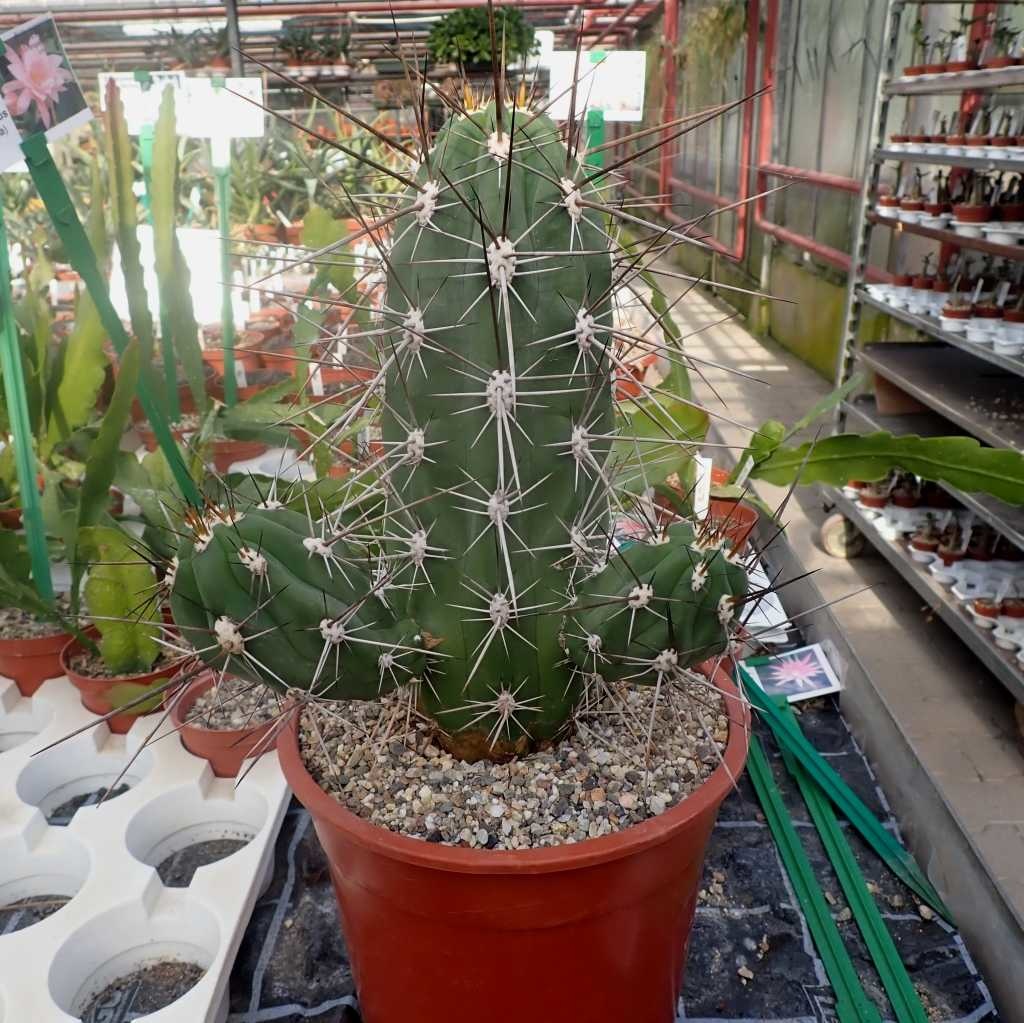When one thinks of cacti, the common images conjured are typically those of the iconic golden barrel cactus or the towering Saguaro. However, nestled within the vast realm of these spiky plants is an intriguing genus known as Stetsonia. If you’re ready to broaden your botanical horizons, then prepare to embark on a journey into the world of Stetsonia—a genus that promises not just aesthetic beauty but also fascinating capabilities.
Through this exploration, we shall delve into the distinctive characteristics, cultivation requirements, and the ecological significance of Stetsonia. Each detail contributes to our understanding of these remarkable plants, all while inviting curiosity and encouraging an appreciation for the diversity found within the cactus family.
As we excessively scrutinize the anatomy and environment of Stetsonia, the gears of perception shift; we begin to see this genus not merely as another family of plants but as a dynamic tapestry woven into the fabric of the ecosystems they inhabit.
The Stetsonia Species: Diversity and Distinction
Within the Stetsonia genus, one species stands out—the Stetsonia coryne. Native primarily to the arid expanses of South America, notably the lush desert landscapes of Argentina and Bolivia, this cactus is emblematic of resilience. Stetsonia coryne is often recognized by its tall, columnar structure that may reach impressive heights of up to 10 feet. The plant’s body, adorned in dynamic green hues, is accentuated by deeply ribbed surfaces that enhance its capacity to store water, a phenomenon crucial for survival in harsh environments.
But it isn’t just the exterior that captivates; Stetsonia coryne boasts a fascinating array of spines. These are not only instrumental in protecting the cactus from herbivores but also serve an ecological role by capturing moisture from humidity in the air, further aiding in its survival. Upon closer inspection, you might even observe a stunning contrast in the coloration of the spines, ranging from the pale, almost translucent whites to fiery reds, each adding striking visual interest.
In addition to the physical characteristics, Stetsonia flowers warrant discussion. Come spring, expect to be greeted by a spectacular display of blooms that erupt in hues of yellow, pink, and white. These magnificent flowers not only attract pollinators such as bees and hummingbirds but also play a role in the broader narrative of ecological interaction. Each flower is meticulously crafted, featuring intricate structures that provide both beauty and functional purpose.
Cultivating Stetsonia: The Art and Science
Like all cacti, cultivating Stetsonia coryne requires a discerning understanding of its natural habitat and how to mimic those conditions in a controlled environment. The first step in nurturing this remarkable cactus is selecting the right soil. A well-draining cactus mix is paramount, as overwatering is one of the chief reasons for cactus demise. To stimulate optimal growth, consider adding coarse sand or pumice, which enhances aeration and drainage.
The lighting conditions also play a pivotal role in cultivation success. Stetsonia thrives under bright, direct sunlight. Ideally, placing your cactus in a location that receives at least six hours of sunlight daily will encourage robust growth and vibrant flowering. However, be cautious of extreme heat during summer, as this may scorch their skin. Balancing light and temperature is crucial to maintaining a healthy specimen.
Watering practices are essential considerations when caring for Stetsonia. Unlike tropical houseplants that thrive in consistent moisture, cacti like Stetsonia require a rather different approach. During the growing season—spring and summer—water must be administered liberally, allowing the soil to dry out completely before subsequent watering. In contrast, during the winter, water needs decrease significantly, and it is prudent to allow the plant to rest, thereby mimicking its natural dormancy during cooler months.
Fertilization is yet another hallmark of successful cactus care. During the growing season, a diluted cactus fertilizer can be applied every month. This will provide essential nutrients and stimulate the growth of healthy roots and flowers. However, exercise caution—over-fertilizing can lead to deficiencies and potential harm.
Ecological Significance: More Than Just a Plant
Beyond their aesthetic appeal and cultivation possibilities, the ecological role of Stetsonia cannot be overlooked. As a part of its native ecosystem, Stetsonia coryne performs a multifaceted role, not only providing sustenance and shelter for various organisms but also contributing to soil health. The term ‘keystone species’ may get thrown around in ecological discussions, but one could argue that some species, like Stetsonia, play a significant role in maintaining their environment, even if they may not fit neatly into that label.
The desert landscape where Stetsonia thrives is a microcosm of interdependence. By retaining moisture in their spiny embrace, these cacti assist in sustaining other flora and fauna that share their arid habitat. The spines, which capture moisture and dispense shade, create a microenvironment conducive to the survival of smaller plants and organisms during warm periods. They act as natural air conditioning, offering necessary relief from scorching temperatures.
Moreover, with the ever-growing concerns regarding climate change, the insights gained from studying Stetsonia can translate into broader environmental applications. Understanding the adaptations of these cacti can illuminate pathways for conservation efforts, particularly in regions facing drought and desertification. Protecting Stetsonia and its fellow desert dwellers becomes crucial, not merely for their intrinsic beauty but for the larger fight against the encroaching challenges posed by climate shifts.
In conclusion, the exploration of Stetsonia reveals much more than merely an addition to one’s plant collection. It highlights a complex interplay of nature, showcasing the elegant survival strategies these cacti have developed. By understanding and appreciating this remarkable genus, one can foster a deeper connection to the intricate ecosystems and the other life forms that inhabit them, enriching both our aesthetic appreciation and ecological consciousness.

Leave a Comment